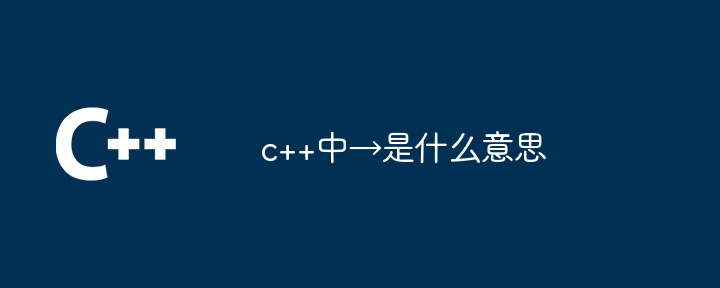
The arrow operator (->) in C is used to access object members. It combines a pointer and a member name to access the member. It is equivalent to the dot operator (.), but Requires objects to be accessed through pointers.

Arrow operator (->) in C
Arrow operator (-> ;) is an operator in C that is used to access object members. It is a point-to-member access operator that combines a pointer with a member name to access the member.
Syntax:
objectPtr->memberName;
Where:
Working principle:
The arrow operator is basically equivalent to the dot operator (.), but it requires that the object must be accessed through a pointer. It accesses members by implicitly dereferencing the object pointer.Example:
struct Point {
int x;
int y;
};
int main() {
Point p;
p.x = 10;
// 使用点运算符访问成员
std::cout << p.x << std::endl; // 输出 10
// 使用箭头运算符访问成员
Point *ptr = &p;
std::cout << ptr->x << std::endl; // 输出 10
}Advantages:
Note:
The above is the detailed content of What does → mean in c++. For more information, please follow other related articles on the PHP Chinese website!
 What are the differences between c++ and c language
What are the differences between c++ and c language
 Recommended learning order for c++ and python
Recommended learning order for c++ and python
 Cost-effectiveness analysis of learning python and c++
Cost-effectiveness analysis of learning python and c++
 Is c language the same as c++?
Is c language the same as c++?
 Which is better to learn first, c language or c++?
Which is better to learn first, c language or c++?
 The difference and connection between c language and c++
The difference and connection between c language and c++
 C++ software Chinese change tutorial
C++ software Chinese change tutorial
 Cost-effectiveness analysis of learning python, java and c++
Cost-effectiveness analysis of learning python, java and c++




